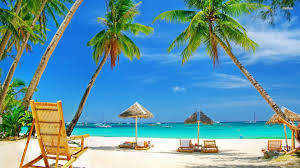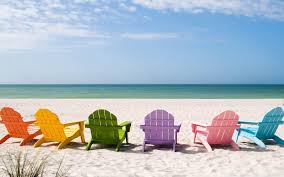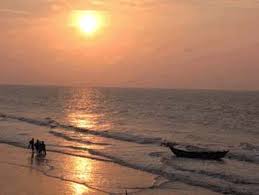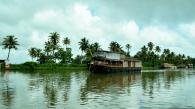Recently Added Places
Chimney is a scenic settlement 8 km away from Kurseong and just about a few kilometers...
The Rann of Kutch, also known as the Great Rann of Kutch (there's a Little Rann of Kutchas...
Known as the Queen of the Arabian Sea, Kochi was an important spice trading centre on the west...
User login
Goa
Goa, a state on India's West coast, is a former Portuguese colony with a rich history. Spread over 3,700 square kilometres with a population of approximately 1.4 million, Goa is small by Indian standards. It has a unique mix of Indian and Portuguese cultures and architecture that attracts an estimated 2.5 million visitors each year (including about 400,000 foreign tourists). Since the 1960s, Goa has been attracting a steady flow of visitors -- first the hippies and returning expatriate Goans, then the charter tourists (starting with the Germans in 1987), pilgrims visiting Catholic and Hindu shrines, those opting to settle in Goa as their home, people going for medical treatment, and a growing number of those who attend seminars and conferences in Goa. Goa is visibly different from the rest of India, owing to Portuguese rule which isolated it from the rest of India for 451 years. The Goan population is a mixture of Hindus and Roman Catholics, the distribution being approximately 65% Hindu and 24% Christian. There is also a smaller Muslim population. Despite this, communal violence has been virtually non-existent and Goa is regarded as one of the most peaceful states in India.


Goa can be reached via its sole airport (Dabolim), by train, and by the many buses connecting the state with cities in India (primarily Mumbai, Mangalore and Bangalore). If you are travelling from Mumbai or Pune, car travel will provide you a journey through breathtaking scenery of the Konkan area.
By plane
The Dabolim airport in Vasco da Gama is Goa's only airport. Some airlines fly directly to Goa, but most international flights arrive via Mumbai. Air India has international flights to Kuwait and UAE twice a week. Air Arabia has discount flights to Sharjah. Qatar Airways has flights to Doha, along with convenient connections to Western Europe, Africa and USA.
Flights can be chartered to the United Kingdom, Germany, Russia and Switzerland.
Many domestic airlines have daily flights to and from Bangalore, Delhi, Hyderabad, Mumbai, Pune, Chennai, Jaipur, Ahmedabad and Kozhikode (Calicut).
On arrival, take pre-paid taxis from Dabolim Airport. A yellow pre-paid taxi booth can be found 30 metres on the left when you exit the main building. There is also a pre-paid taxi stand in the international arrival area.
Official Govt Rate Taxi Board (Official Govt Rate Taxi Board), (Taxi Board is just outside arrivals), [1]. Those who want to make the trip to their hotel before the supplied coach may like to go by taxi, Just outside arrivals there is a taxi board showing rates for all the popular destinations (see link). Another option is to find a taxi just outside the airport gates who might be on their way home and save yourself a few hundred rupees. Official Govt Rate (2013). edit
Many resorts pick up guests from the airport for free, so make sure you ask your resort for free pick-up.
By bus
There are several bus routes from various cities, but most traffic is from mainly Mumbai and Pune. Due to increasing demand from the south, there has been an increase in buses and trains from Mangalore and Bangalore. Overnight buses from Mumbai to Goa are an alternative to trains and flying. Book in advance during the crowded seasons (particularly during the Christmas-New Year rush, for Carnival, or when other Indian regions have school holidays when families travel).
Kadamba Transport Corporation is the Goa state-run transport service. Its buses have seen better days, and more efficient times. There are also other state-run buses run by the governments of Karnataka (some services are efficient, specially the Volvo buses), Maharashtra, and Andhra Pradesh. Many private players also offer bus connections to other cities, with varying levels of discounts and efficiency, with the two usually being inversely related.
The main centre for booking train and bus tickets, in Panjim, is around the Kadamba inter-state bus terminus. Tickets for the Konkan Railway can also be booked here, though expect long queues during the holiday season (which in India, can also coincide with the timings when children have a school break).
By train
Indian Railways connects Goa with direct train services from Delhi, Mumbai, Ahmedabad, Mangalore, Kochi, Kolkata, Thiruvanantapuram, Bangalore, Chennai and Hyderabad. The destination station is usually Madgaon in South Goa, one can also choose to get down at Thivim in North Goa. Travelling to Goa by train is a real pleasure as the route passes through greenery and many tunnels. Goa is also connected to Pune via the Belgaum Miraj line.
A railway station most tourists tend to miss is Thivim, which is served by most trains and is located very close to the popular beaches of North Goa. In case one had already booked a hotel, it would be a good idea to consult them on which station to get down at.
For budget travellers, this is the cheapest option, along with being faster and much more comfortable than travelling by road. It is advisable for tourists to make reservations well in advance as the major trains (Konkan Kanya, Nethravati Express, etc.) are usually heavily booked.
Trains from Mumbai and most other places have a quota of seats set aside for tourists. Quota tickets must be purchased in person at the rail station by the tourist and cannot be booked via a travel agent. Note that quota tickets are only sold at the station of origin. Tickets can be booked online
Unless travelling on a shoestring budget, it is advisable to travel in air conditioned sleeper coaches. These are quieter and much more comfortable. Each bunk is provided with two freshly laundered sheets, a blanket, and a pillow. You can also have a hand towel on request.
Most travel agents will book tickets for a small fee (₹200), but be aware that trains do get busy and you need to book in advance. Do not leave booking your ticket to the last moment as you may be disappointed.
Art & culture
Goa has a more than its fair share of museums, art galleries and libraries. You will find many government run museums in Panaji, including the Goa State museum, the Kala Academy, the Central Library and the Goa Science Centre. In Vasco da Gama, you can find the Naval Aviation Museum, a great place to see vintage aircraft.
Old Goa is a great place to see examples of Christian religious art, and sometimes, secular art. There you can find the Christian Art Museum and also a modern art gallery containing the works of surrealist Dom Martin. In Mormugao, you can find the Religious Museum of the Blessed Joseph Vaz. The Xavier Centre of Historical Research at Bardez also has a gallery on Christian Art.
Attracted by Goa's bohemian life, many artists, painters and architects have made their home here. They too have proceeded to set up art galleries and museums. An example of this is Subodh Kerkar's art gallery in Candolim. Benaulim also has the Goa Chitra Museum, containing the largest collection of ethnographic artifacts ever assembled in one place.
Other museums of note are Gerard da Cunha's architectural museum Houses of Goa in Benaulim, Big Foot(aka Ancestral Goa) at Loutolim, Salcette, an attempt to illustrate and recreate Goa's traditional past. There's even a vintage-cars collection of sorts -- Ashvek Vintage World, in Nuvem, Salcette
Beaches
Goa is famous for its beaches, ancient temples and churches, and the Goan carnival.
Sunset at the Palolem beach
Arambol Beach - A quiet and virgin beach in North Goa.The nature has gifted it a lot of beauty.There are many water sports available like paragliding,parasailing,many massage options,a very big beach market.
The sweet lake is one of the miracle wherein the sweet water lake is touching the sea.The deep forest behind sweet lake is also the attractive point. There are a lot of accommodations in Arambol.Om Lake Resort is one of the popular accomodation there which offers the budget cottages.There are around more than 100 's of restaurant in the beach.There are live music options also. The water is shallow and good for swimming. Arambol is not what it used to be, there are plenty of shops, eateries and places to stay. It has in-fact become huge and not as peaceful as it used to be, but it has turned into a cultural hub. It is like goa within goa now.
Anjuna Beach - Close to the Chapora Fort, its key attraction is a magnificent Albuquerque Mansion built in 1920, flanked by octagonal towers and an attractive Mangalore tile-roof. Anjuna was the second home (and main location) of the hippies in Goa in the 1960s and 1970s, after other destinations like Calangute got too "crowded" for them. It is still the venue of a (vastly-changed and more mainstream) flea market held each Wednesday. In the nearby village of Arpora, two colourful Saturday night bazaars are held in the non-monsoon seasons. This is still part of "alternative" Goa, though charter and other tourists also visit in increasing numbers to "get a feel of the hippy years".
Palolem Beach-a scenic beach in extreme south Goa with scenic rocks and islands off its shores. Good eating options. It is becoming pricey (by local standards) and getting a bit crowded, but still less crowded compared to other popular beaches.
Patnem Beach - a small and quiet beach in Canacona Taluka.
Vagator Beach - a beach in Bardez, neighbouring Anjuna.
Morjim Beach - a beautiful beach, inhabited by Russian tourists. This place is popular among kitesurfers due to the shallow depth of the sea and a very wide beach. Prices are high, with many restaurants offering Russian cuisine. Nightlife is vibrant here.
Asvem Beach - a quieter beach in extreme north Goa's Pernem Taluka.
Mandrem Beach - another beach in extreme north Goa's Pernem taluka
Candolim and Sinquerim Beaches in North Goa's Bardez taluka. Once humble fishing villages. Now the crowded concretised coast of North Goa. Goa's Benidorm. Or quickly getting to be as crowded.
Colva Beach - This beach's spectacle of sea, sand and sky blend in a enchanting natural harmony, weaving their magic spell on the visitors. Known for its scenic beauty. This is part of Salcete, Goa's only Catholic majority sub-district. Once a very hospitable area, now relations are getting monetized thanks to tourism. Beware of mountains of trash on the beach and nearby locations, stray dogs and bad odors.
Calangute Beach - aka Queen of all Beaches in Goa. Once highly rated. Now crowded. Expect traffic jams along the main crowded street. Beach is full of Indian tourists, a lot of noise, a lot of souvenirs and water sports beggar. You won't get peace here. Many famous clubs are located here. Nice eating options.
Baga Beach A family-beach and charter tourist destination just outside Calangute.
Chapora Home of the Chapora fort. Close to Vagator and Anjuna beaches. Also site for a fishing jetty where trawlers (introduced into Goa in the 1960s and 1970s, amid protests from traditional fishermen, who were affected by them) bring in their catch. Dil Chahta Hai Movie's one song was shot at this fort. Although in pretty damaged state, Chapora fort offers mesmerizing views of sea and both beaches. It's a bit difficult to find the way to the fort, but bikers won't mind it. Built on a hill top, fort offers some resistance for climbing up.
Chapora village offers an interesting mix, a small street market with lots of eateries, juice center and rooftop restaurants and cheap accomodation. A few places to note would be, Seaview Guest House, Ganesh Juice center, Baba rooftop restaurant.
Polem Southernmost beach of Goa.
Churches and Cathedrals
It is no exaggeration to call Goa, a city of churches which are a proof of the rich history of the beach city. During the initial stages of the Portuguese rule in the city, building of church building was a favored activity, mainly because they wanted to spread Christianity and convert as many people as was possible. These churches are world-renowned as they have kept intact the old-world charm and thus are famous as tourist attractions. They are an indispensable part of the culture and society of Goa that have helped in the spread of education also. Here is a list of 5 churches you just cannot miss in Goa:
Bom Jesus Basilica (1605) - built in 1605, this Basilica has the mortal remains of St. Francis Xavier, one of the patron Saints of Goa. It is known for its distinctive baroque architecture that has a display of architectural pieces in wood, stone, gold and granite. Francis Xavier died while aboard a ship and his body was taken to Malacca but it was decided that he should be buried in Goa. After 2 years, it was noticed that his body had not decomposed, that was no less than a miracle. After every 10 years, his body is put for public display in a silver casket designed in the 17th century.
Se Cathedral - built in 1619, one of the largest churches in Asia, which took around 80 years to get constructed, Se Cathedral is dedicated to St. Catherine of Alexandria. It was built to remember the victory of the Portuguese over the Muslim rulers in the city. The building has a Golden bell that can be heard in the whole of Goa. Located in old Goa, one of the bell towers of the church was destroyed during a lightening storm. The structure also consists of 14 alters inside, with each being beautifully carved.
Church of St Francis of Assisi - built in 1661, located on the back of the Se Cathedral, this church is a beautiful piece of ancient workmanship. The structure has striking painted panels showcasing the life of St. Francis of Assisi on the walls. The adjoining seminary has been converted into an art museum, which preserves the painting that was previously kept at the Panaji Secretariat. The church also has an octagonal tabernacle decorated in an ornate style.
Church of Our Lady of the Immaculate Conception -built in 1541, a famous landmark of Goa, it is the oldest church situated in Panaji. The towers of the church have a statue of Mother Mary at the front. Around 450 years old, this church was built to welcome sailors home. This church is largely visited even today by Catholic devouts and has been beautifully preserved. The bell of the church is 2nd largest in the world.
Church of St. Catejan - built in 1700, Church of St. Catejan has a striking resemblance St. Peters Basilica in Rome. It was built by a group of Greek and Italian priest to initiate a contrast to the other churches built during the Portuguese times. On the left, there three altars dedicated to the Holy Family, Our Lady Of Piety and St. Clare and the right-side altars are dedicated to St. Agnes, St. Cajetan and St. John. Though the building is 300 years old, but has been beautifully preserved.
Temples
[Shree Manguesh Shantadurgai Prasanna Temple]:- The temple is dedicated to the deity of Lord Shiva. Shree Manguesh temple is located at Mangeshi in Priol, Ponda Taluka,1 kilometer from Mardol close to Nagueshi, 22 km from Panaji the capital of Goa and 26 km from Margao. Sri Mangesh temple is famous for its pristine glory, which attracts thousands of visitors every year.In Maha Shivratri Festival here you can see a very big fair.In 1560, anticipating the onslaught of the Portuguese, the devotees had moved Shree Manguesh Shantadurgai Prasanna Shivalinga from Kutthal to a safer place under a Hindu prince. Surrounded by hillocks and covered by forests, the Shivalinga was kept at a place, which now is known as Mangeshi.
The Peshwas donated in 1739, the village of Mangeshi to the temple on the suggestion of their Sardar, Shri Ramchandra Malhar Sukhtankar, who was a life-long devotee of Shree Manguesh.
Since then this little village on the Panaji-Ponda road has become a place of pilgrimage for the followers of the Lord and an attraction for the tourists from rest of the country and outside.
Known for its natural beauty and pleasant surroundings, Mangeshi is still a hamlet with about 1,000 families. But it is a center of culture and the musicians from this place have earned countrywide reputation as master singers for several generations.

Five Star Hotel
Eat
The Goan staple diet consists of rice and fish curry along with pickles and fried fish. This can be found on many of the beach shacks. The Goan cuisine is a blend of Portuguese and local flavours. Many dishes such as prawn balchao and Kingfish in Garlic have distinct Portuguese flavour. The cuisine is mostly seafood based, the staple foods are rice and fish. Kingfish (Vison or Visvan) is the most common delicacy, others include pomfret, shark, tuna and mackerel. Among the shellfish are crabs, prawns, tiger prawns, lobster, squid and mussels.
Dishes such as Sorpotel, Vindaloo and Xacuti (pronounced Cha'cuti), Cafreal will be familiar from Indian restaurant menus, and are originally Goan dishes. For those with a sweet-tooth, Bebinca is a must. A traditional goan pudding, Bebinca is made of flour, egg-yolk, and, coconut milk. It is certainly a great way to finish that sumptuous meal.
Most beaches have shacks that serve surprisingly delicious meals, specially sea-food and they'll usually consult you to see how you like your food. Don't miss the shack eating experience. You'll want to go back and do it again. Most fancy hotels and restaurants serve terrible food, it is best to eat at local places, ask a taxi driver where these would be and don't let him take you to any fancy restaurants as they receive commission.
Some really good restaurants not to be missed are 1. Souza Lobo Bar & Restaurant,Off Calangute, North Goa 2. O Coqueiro ,Porvorim, Goa 3. Florentine's 4. Viva Panjim, Panjim 5. Starlight, Anjuna 6. Bob's Inn, Candolim.
Drink
For a destination which tends to be costlier -- in almost everything -- than the rest of India, Goa has liquors and wines that are priced noticeably low. Products available range from wine (red and white), to the oddly-named Indian-made foreign liquors (IMFLs, which include whisky, brandy, rum, gin, vodka and more), and local liquors (basically cashew and coconut feni). Prices of domestic products range from Rs 40 to Rs 350 per bottle, depending on product and brand.
There are two local brews long made and drunk in Goa -- cashew feni and coconut feni. One comes from the cashew apple, and the other from the sap of the coconut tree. Goa's feni-making has been much focussed on.
Feni-brewing skills have been honed by Goa's former Portuguese rulers. Strange but true: the cashew was brought in by the Portuguese themselves, and today it seems like a closely integrated part of Goa. Cashew-apples go to waste in neighbouring states, and in the fruiting season, one could get a strong smell of semi-fermenting apples being transported specially from Maharashtra into Goa, at locales close to the border.
Feni has come to become synonymous with Goa. "Indigenous alcoholic drinks include coconut palm toddy from south and eastern India and the Goan liquor 'feni' based on coconut palm juice or cashew nut," explains the website of the Indian Embassy in Russia.
Needless to say, feni has its own strong taste. Some like it, some don't. At one of the liquor outlets in Panjim, you can run into bus-loads of tourists picking up their 'souvenir' of feni.
Of course, there are a range of other options too. Local wines are priced at between Rs 40 to Rs 150 per bottle (of 750 ml).
In recent years, Goa has been hosting what it calls the "Grape Escape", a festival of wines, around the start of each year (held in mid-February 2007 and May 2006, for instance).
In Panjim, new ventures are also bringing in new products. A Nau ("The Ship" in Portuguese, unfortunately since closed down, as of October 2008) brings in a range of wines and other commodities from Portugal.
Global Spirits and Foods, which operates out of the Pilerne Industrial Estate some 10 kms from Panjim, wholesales a wide range of products from across the globe -- champagne and cognac from France; wines from Argentina and Chile, Australia and New Zealand; vodka from Poland; single malt from Scotland; and even the most popular distilled alcoholic beverage of Brazil Cachaca. (Cachaça is the product of the distillation of fermented sugarcane juice, with its alcohol strength between 38% and 51% by volume. It is often said to differ from rum in that it is made from sugarcane juice while rum is made from molasses.)
In terms of local products, Madame Rosa has also been diversifying into coffee and other liqueur. Flavours include mango, anise, almond and chocolate mint. PVV (Pedro Vincent Vaz), another prominent brand, comes out with its cashew and palm products (in sizes of 750 ml, 180 ml and 60 ml). Other brands have names like Dom Pedro, Goan Treasure, Cashew Inside, Fruit Shape, among others.
Goa is an ideal holiday destination for travelers, but tourists should bear in mind that India has its own set of safety issues.
Be careful, when alone, on beaches at night.
Do not accept un-bottled drinks from strangers under any circumstances.
Do not accept rides from strangers, locals or foreigners, especially at night.
Be careful when wading at the beach as undertow riptide currents can be strong in certain beaches. Avoid the mouths of all rivers (such as the Mandovi River at Miramar), especially at low tide when the flow of the water current out to sea is the strongest. And just don't get into the water at all in the off season. The safe swimming period in Goa is November to early May.
Avoid contact with unprocessed cashew nuts as they contain an irritant ('urusiol') also present in poison ivy. The cashew apple is edible when ripe.
Goans are very friendly and helpful; should you have any problems, talk immediately to the nearest Goan shop, restaurant or bystander and ask for help.
Travel guides can be expensive and have been known to dupe foreign visitors. Beware of guides offering to take you to a disco with lots of attractive girls, who will dance with you. This is a scam to cheat you of your money.
Befriend a decent taxi driver and agree on regular business.
Temperatures in winter and summer can be extreme, so do not forget sunscreen.
Beware of any scam that offers a free ride in return for a "prize". The prize will suck guaranteed.
Also, beware the 'ear doctors', who are more likely to accost men than women and 'produce' some tiny revolting creature, supposedly from your ear, for which they then offer a 'cure' (It is, however, humorous to read the cards they print up promoting themselves).
While travelling by train, beware of pickpockets, strangers who offer you snacks or tea, and other such people who make trains in India a regular hunting ground.{Please make sure not to take off your precious footwear(In non a/c coaches), or you might not have anything to wear next morning. The same goes with all your valuables}
Don't trust travel agents who say that a train is fully booked! They want you to hire a car that costs more and provides them a kick back. A better thing to do is to check out the details yourself on the Indian Railways website [18]. Also, you can book your railway ticket online on [19]. But you will have register first.
People travelling by car do ensure to carry all vehicle documents and driving licence because most of the police constables in goa are corrupt and will harass you to shell out exhorbitant amount , never pay bribe always go the legal way go to the police station. Pollution under control certificate is must and is issued in every 3 months you may contact nearest petrol pump to get it re-issued.
Sea Beach
- Log in to post comments



